Tag Archives: airplane
Airbus unveils three hydrogen-powered zero-emission aircrafts to be operational by 2035!
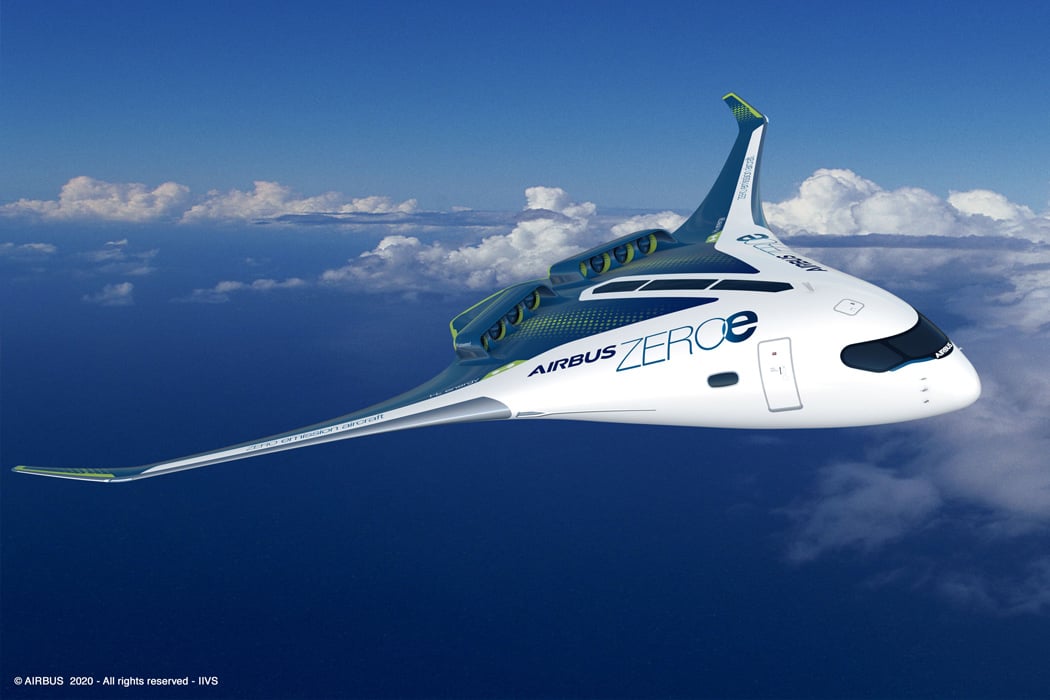
Airbus is targeting to bring zero-carbon passenger plane to the masses by 2035, keeping in line with its vision for emission-free flights in the future. The ultimate goal is to pave way for the “decarbonization of the entire aviation industry.” To this end, the aerospace giant has revealed three concept airplanes that will harness the power of hydrogen to give their future-forward vision, WINGS! Choosing hydrogen fuel for these concepts makes complete sense – after all, it is clean aviation fuel and is one of the solutions for the aerospace and other industries to reach their climate-neutral milestones.
As Guillaume Faury, Airbus CEO said, “I strongly believe that the use of hydrogen – both in synthetic fuels and as a primary power source for commercial aircraft – has the potential to significantly reduce aviation’s climate impact.” Guillaume added that this venture requires able support from the government and industry partners. It will require increased funding for research & technology and digitalization. He also emphasized on the fact that airports will have to be ready for the hydrogen transport and refueling infrastructure to make it feasible in day-to-day operations.
Designer: Airbus
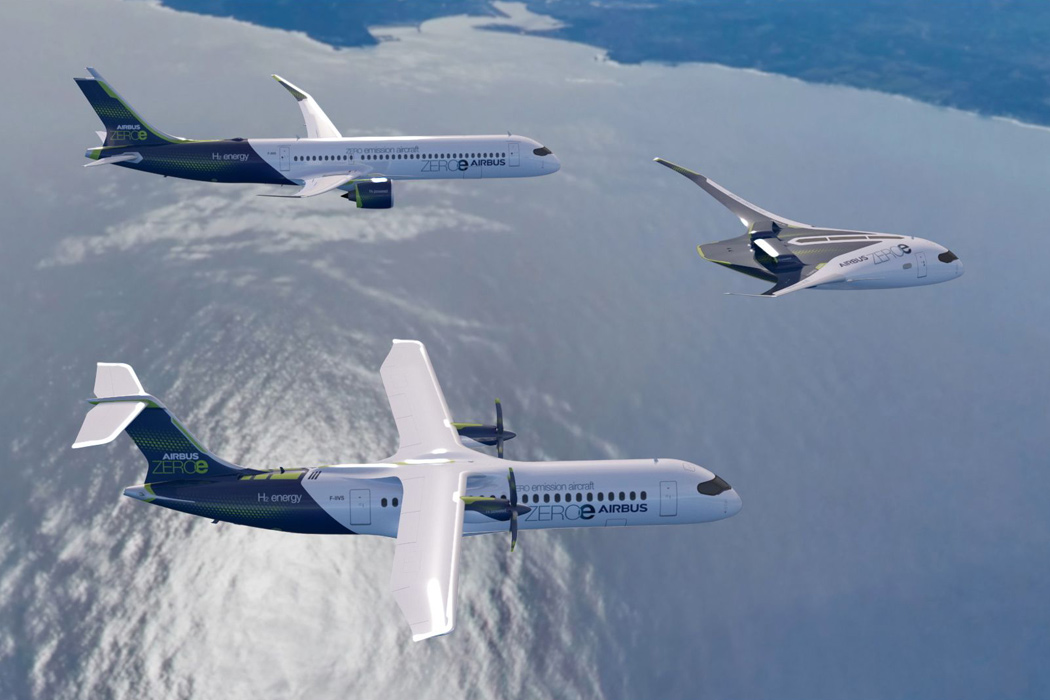
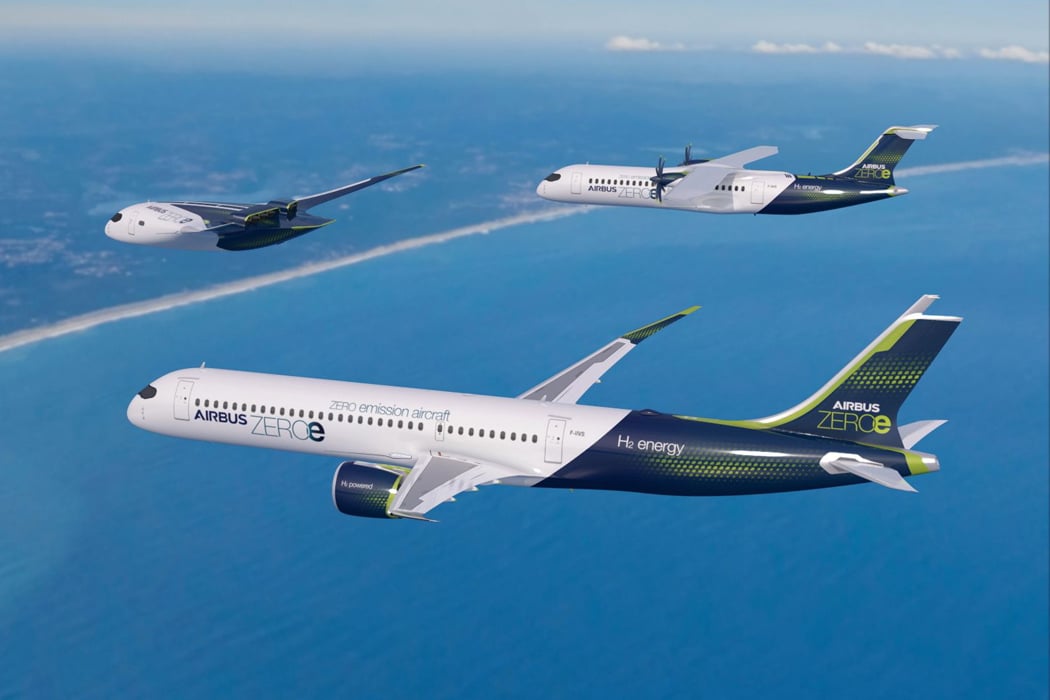
The trio of concept aircraft, for now, is christened “ZEROe” – each one having a unique configuration depending on the requirement of the commercial aviation operation.
Airbus ZEROe Turboprop
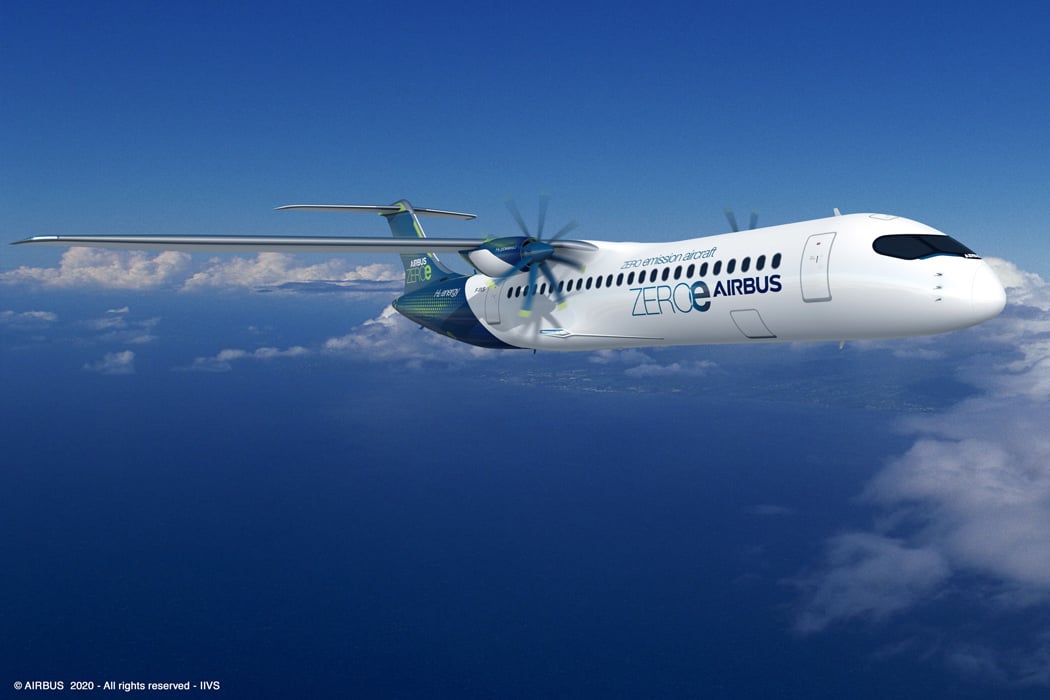
Fit for short interstate trips, the ZEROe Turboprop aircraft uses a turboprop engine which is again powered the liquid hydrogen fuel. By the way, it can carry up to 100 passengers on-board. The plane goes more than 1,000 nautical miles on a full tank, making it perfect to be a private airliner for the filthy rich.
Airbus ZEROe Turbofan
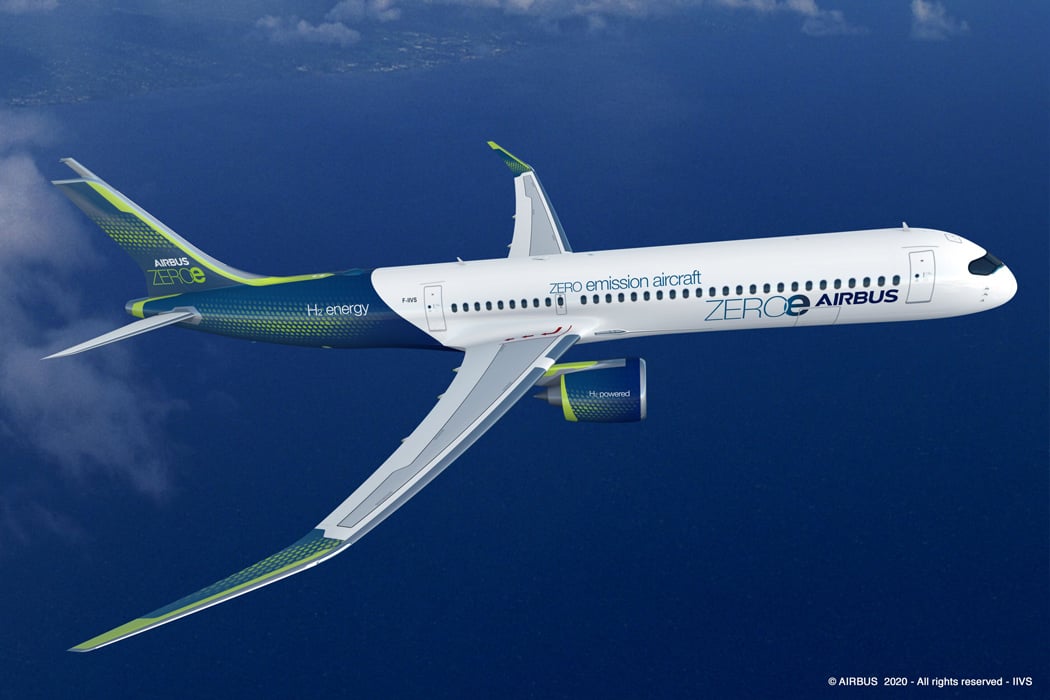
The ZEROe Turbofan is more of a conventional airplane configuration that accommodates 120-200 passengers. Totally capable of conducting transcontinental flights (more than 2,000 nautical miles), the ZEROe Turbofan is propelled by a modified gas-turbine engine, powered by liquid hydrogen fuel. The fuel is stored and supplied to the airplane engine via the storage tanks on the back of the rear pressure bulkhead. The passengers are seated in the other three-fourth of the plane along with the crew.
Airbus ZEROe Blended-wing body

The ZEROe Blended-wing body is the most eye-catching of them all – looking to be inspired by the Stealth bomber plane. It has a wide configuration as compared to the other two which have a very sleek, lengthy structure. The wings are a part of the airplane body – that’s why the name “blended-wing body”. It can haul up to 200 passengers in one go and has a range of 2,000 nautical miles, similar to its sibling, the turbofan concept. This design has a very wide fuselage, thereby, giving flexibility for multiple configurations when it comes to the cabin layout and the hydrogen fuel storage option.
Nike transforms a Boeing 787 interior to keep pro athletes rejuvenated and healthy on the fly!
None compares to Teague when we talk about designing interiors of Boeing commercial airliners. So, how could they resist the temptation to craft the interiors of a Boeing 787 Dreamliner tailor-made for pro athletes? The Seattle-based cross-discipline design firm collaborated with Nike to come up with the Athlete’s Plane that keeps athletes in top playing condition, even when they traverse three timezones to play a crucial away game. Specifically designed for a basketball team, the airborne facility has everything a player needs to be 100 percent mentally and physically fit to negate the “away disadvantage.” To extract the best performance out of players, when it matters, the quality of travel is important – for the team staff as well. To this end, Teague closely interviewed professional players, coaches, and operational staff to conceptualize this athlete-centric Boeing 787 Dreamliner’s interior.
Once the problem was identified, Teague worked with expert designers and trainers from Nike to design particular zones with the intended purpose. They are segregated into – recovery areas for rejuvenation, workout decks for muscle toning, sleep, and review zones for analyzing past game data. The recovery areas are dedicated to accelerating body repair and there are in-flight biometric monitoring urinals too. Players also benefit from the compression sleeves embedded on the aircraft’s sidewall. Interestingly, the embedded sensors on the athletes’ garments keep track of the health statistics and send alerts to the accompanying staff if something needs to be tended to.
Keeping in mind the height of basketball players, the lie-flat seats are ideal for relaxed body posture. The ambiance of this area is tuned for relaxation to give the individuals their own personal space. Here players can also review game clips thanks to the OLED screens and large touchscreen monitors. Sleep is vital to keep the body and mind in perfect condition for any activity. On-board this airliner, the players benefit from an interior aptly created to promote healthy sleep, even during long flights. For players who have had enough sleep for the flight, moving down to the lower deck for socializing and having a coffee could be an option. In this section, the players will find café tables and benches that convert into beds for a quick nap.
Designer: Teague
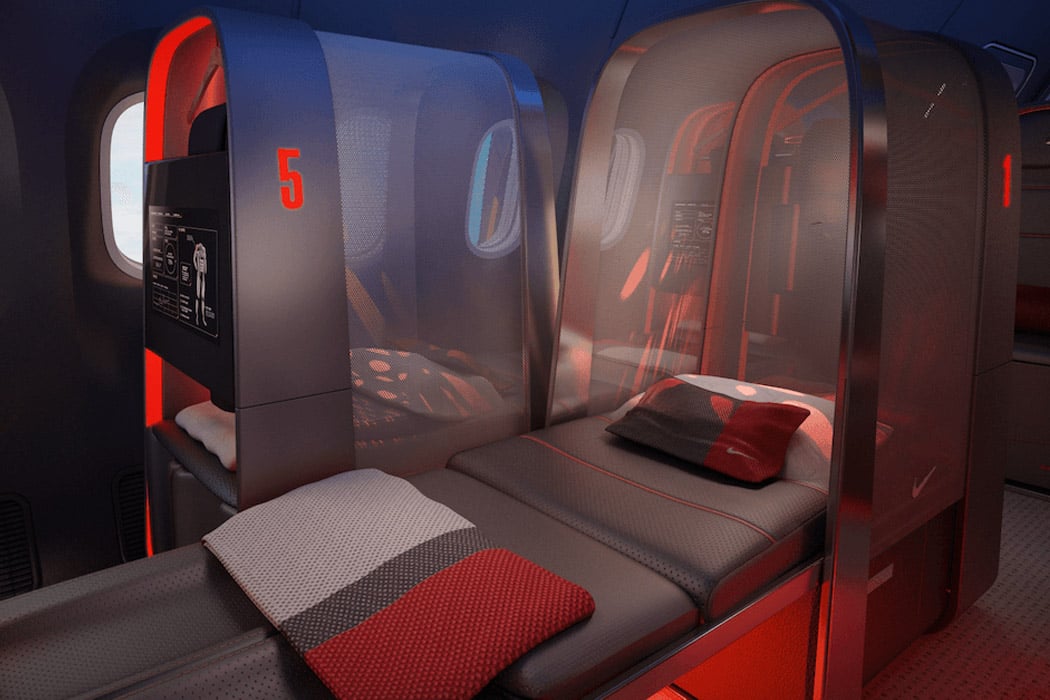
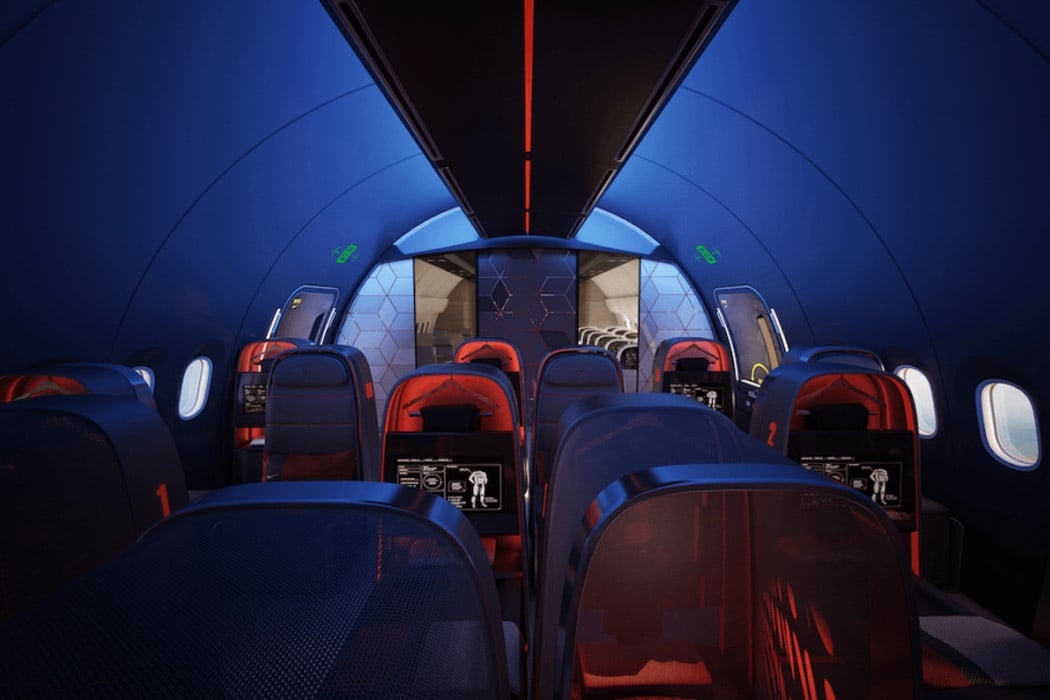
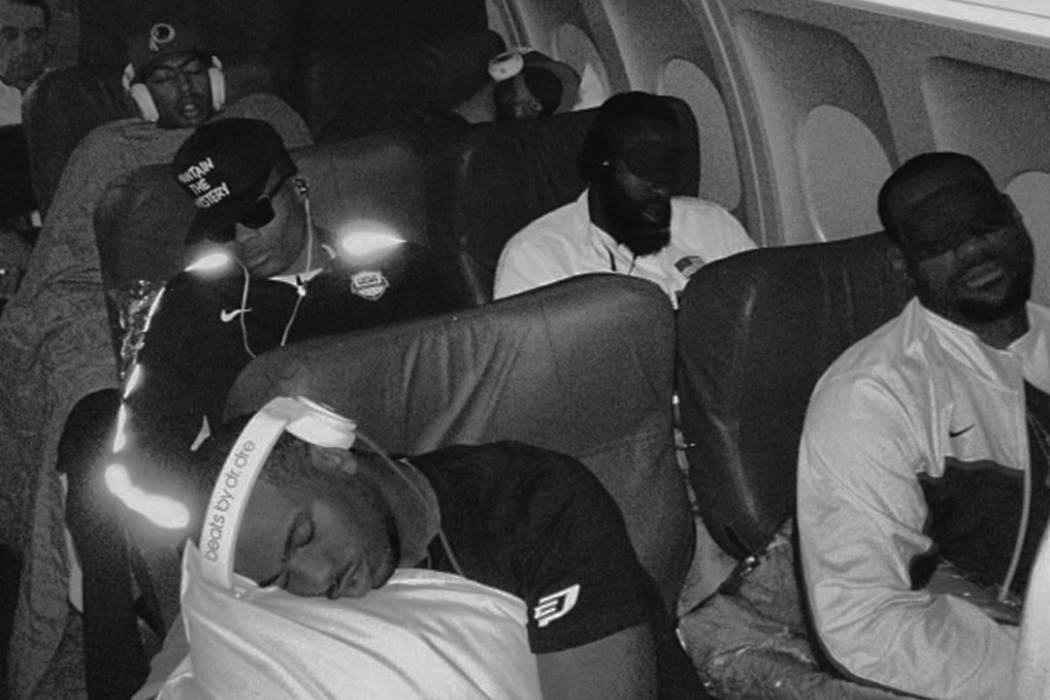
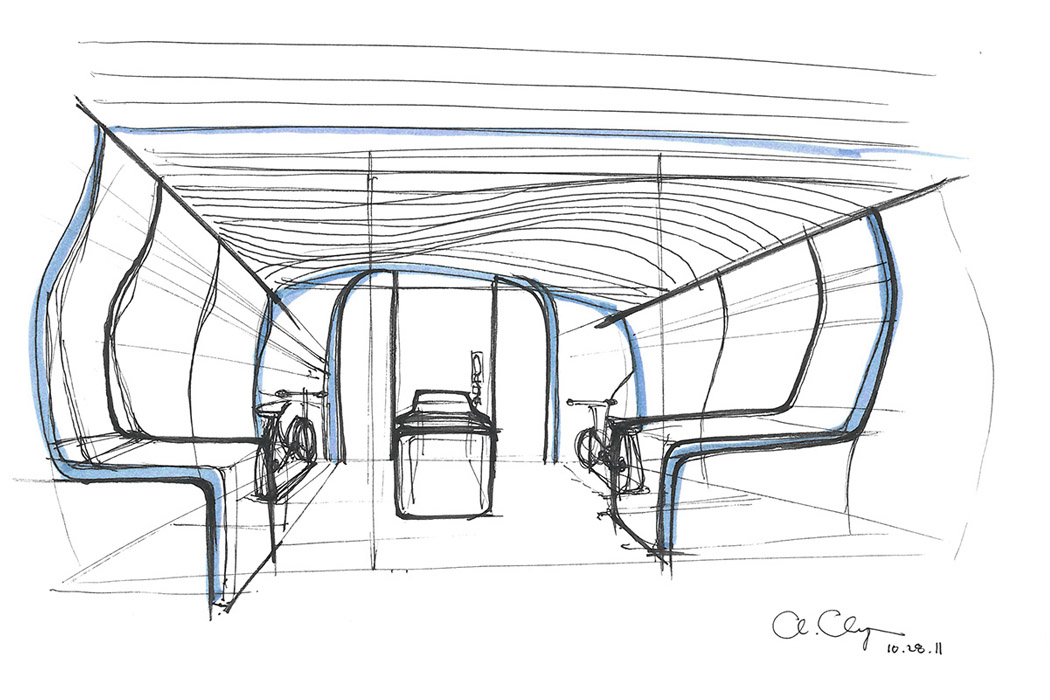
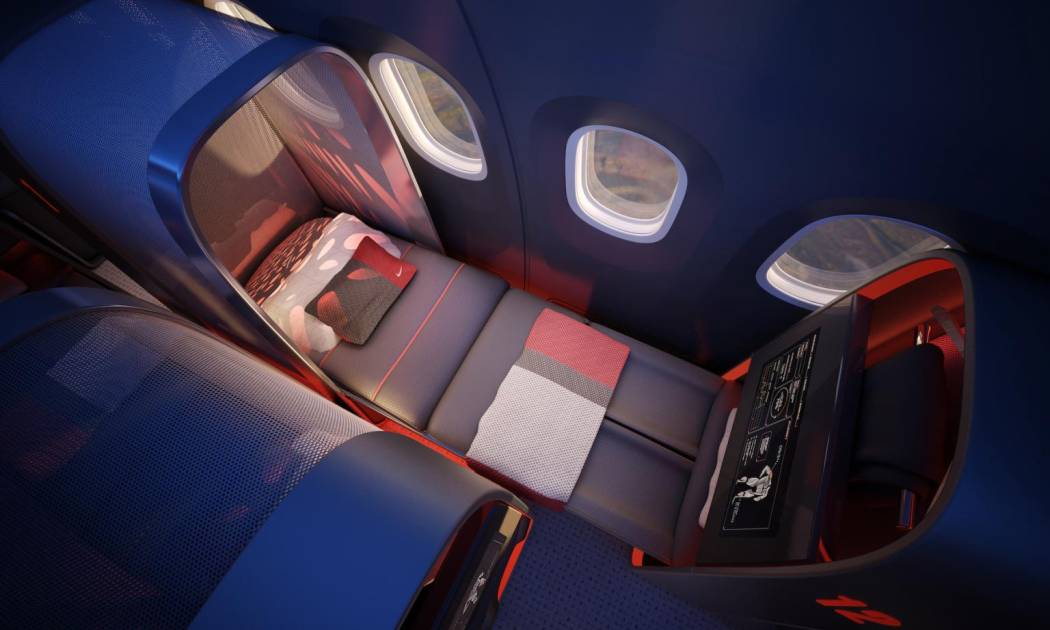
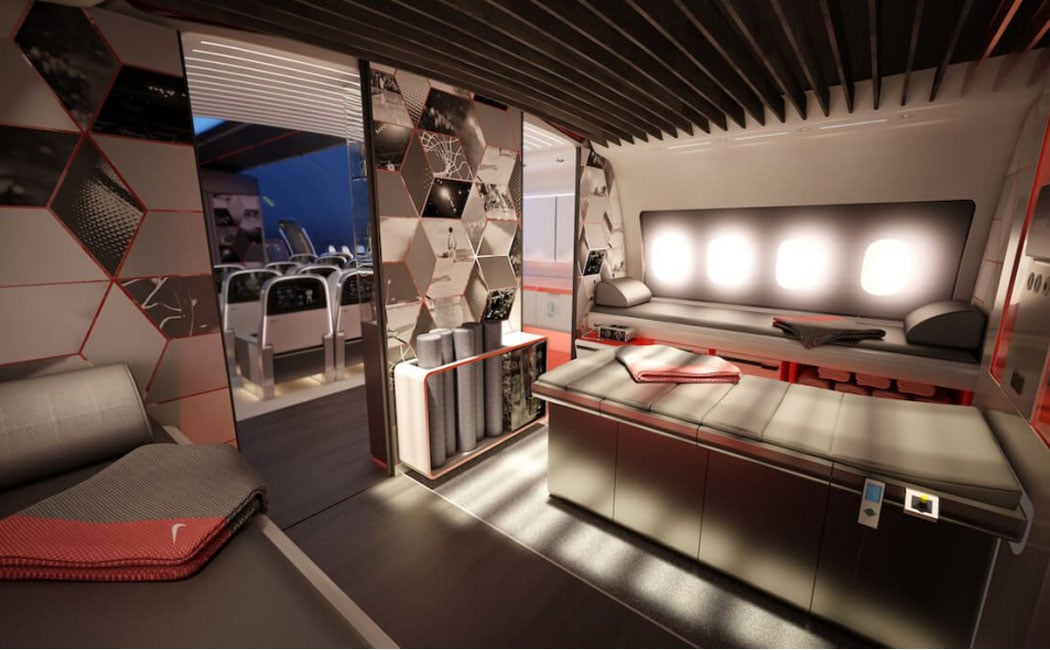
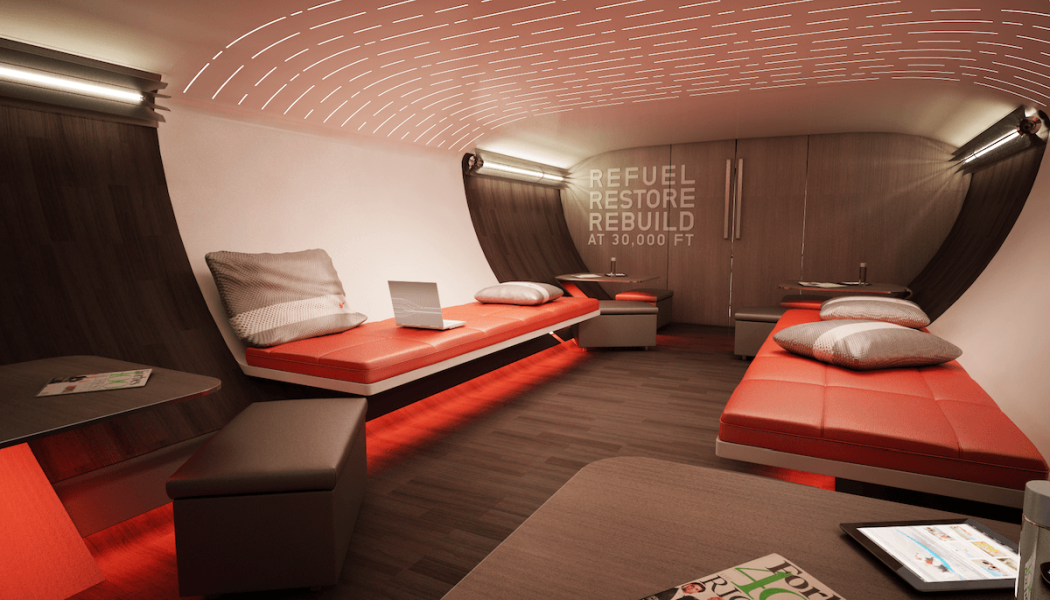
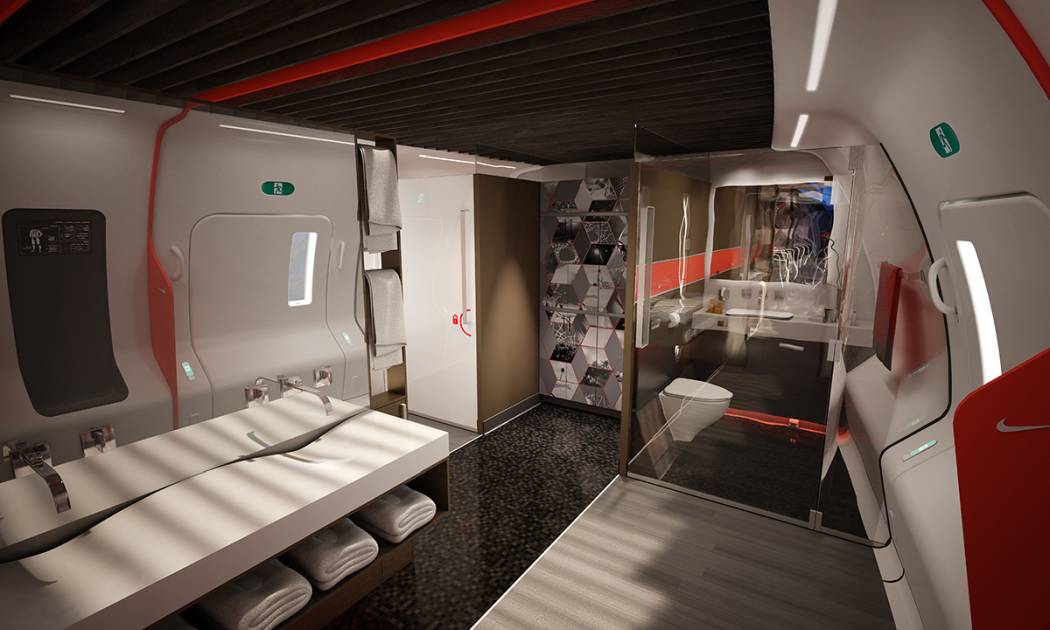
A typo created a 212-story monolith in ‘Microsoft Flight Simulator’
In Case of Emergency, Your Airplane Can Be Used as a Flotation Device
Unless you happen to be in a seaplane, if your airplane lands in the water, you’re probably in big trouble. The only other exception is if your airplane is actually an inflatable pool float, like this air-filled jumbo jet.

Unlike the floatation devices you find under your seat on an airplane, M Mark’s airplane float is big enough to hold up to seven people. That’s a far cry from the hundreds most jumbo jets can carry, but it’s way more than the average pool float too. Now you just need to find a swimming pool that’s big enough for this thing to land in. Perhaps a lake would be a better idea.

The floating airplane is made from heavy-gauge PVC, and should prove pretty seaworthy as long as you don’t carry any toothpicks, thumbtacks, or skewers in your swimsuit. While its $233 price tag might seem steep for a pool float, it’s way less than a round trip ticket from Chicago to the Bahamas these days.
[via Born in Space]
Post Covid-19 air travel: Redesigned flight seating that makes traveling safe and luxurious
Seats on a business class ticket are dramatically safer than those in economy class. That isn’t because they were designed to be safer, it’s because they were designed around the idea of spacious luxury. James Lee’s butterfly seats explore that very idea to make flight seats safer. By isolating seats, creating partitions, and providing facilities that align with the concept of premium value addition, the Butterfly seats instantly offer a much more safe travel experience by creating dedicated spaces for passengers with lesser chances of spreading germs through interaction.
The seats come in pairs of two and are slightly offset, rather than being side by side. This immediately means you don’t have someone directly beside you, which decreases the chances of socialization. Seats even have adjustable partitions between them to separate passengers, and even have dedicated armrests so you’re never accidentally resting your arm on someone else’s place. Seats come with all the fittings needed to allow you to store your belongings and even work while flying. A dedicated laptop desk ensures you can work while flying, and there are even slots to store magazines and your own pair of in-flight headphones. For parents traveling with little children, the seats fold down to turn into a makeshift bed for youngsters, and if you’re traveling solo with nobody beside you, both the seats can be folded down and covered with a zigzag mattress so you can sleep comfortably – a feature that’s useful for people who are unwell on the journey or for red-eye flights.
It’s simple tactics like this that will help make flying safer and less fearful at the same time. With solutions like the Janus Seat, you end up creating a functioning solution, but run the risk of still dealing with an entrenched sense of fear in the passengers (besides, sitting in that middle seat becomes even less desirable). The Butterfly, however, retains the status quo, with seats that aren’t dramatically different and visors/partitions that don’t look like partitions. By masking the idea of safety using luxury as a design solution, the Butterfly makes traveling safe again while also allowing the experience to be a relaxing, valuable, and comfortable one!
The Butterfly Aircraft Seat is a winner of the A’ Design Award for the year 2020.
Designer: James Lee
The solution to making flying safer and less scary post-COVID is to integrate safety with luxury
Seats on a business class ticket are dramatically safer than those in economy class. That isn’t because they were designed to be safer, it’s because they were designed around the idea of spacious luxury. James Lee’s butterfly seats explore that very idea to make flight seats safer. By isolating seats, creating partitions, and providing facilities that align with the concept of premium value addition, the Butterfly seats instantly offer a much more safe travel experience by creating dedicated spaces for passengers with lesser chances of spreading germs through interaction.
The seats come in pairs of two and are slightly offset, rather than being side by side. This immediately means you don’t have someone directly beside you, which decreases the chances of socialization. Seats even have adjustable partitions between them to separate passengers, and even have dedicated armrests so you’re never accidentally resting your arm on someone else’s place. Seats come with all the fittings needed to allow you to store your belongings and even work while flying. A dedicated laptop desk ensures you can work while flying, and there are even slots to store magazines and your own pair of in-flight headphones. For parents traveling with little children, the seats fold down to turn into a makeshift bed for youngsters, and if you’re traveling solo with nobody beside you, both the seats can be folded down and covered with a zigzag mattress so you can sleep comfortably – a feature that’s useful for people who are unwell on the journey or for red-eye flights.
It’s simple tactics like this that will help make flying safer and less fearful at the same time. With solutions like the Janus Seat, you end up creating a functioning solution, but run the risk of still dealing with an entrenched sense of fear in the passengers (besides, sitting in that middle seat becomes even less desirable). The Butterfly, however, retains the status quo, with seats that aren’t dramatically different and visors/partitions that don’t look like partitions. By masking the idea of safety using luxury as a design solution, the Butterfly makes traveling safe again while also allowing the experience to be a relaxing, valuable, and comfortable one!
The Butterfly Aircraft Seat is a winner of the A’ Design Award for the year 2020.
Designer: James Lee
Aviointeriors proposes plastic barrier to allow safe flying

This is what flying economy class could look like post COVID-19! Inspired by the Roman god of beginnings and transitions, the Janus seat is the future of travel.
This design could be the new norm in the airline industry to allow passengers some degree of isolation and distancing while sitting next to each other. The first concept of the two-faced Janus seat by Aviointeriors simply reverses the center seat and separates all three passengers with a shield made of transparent material. This creates a protective barrier for everyone while giving each passenger their own space isolated from others, even from people who walk through the aisle. It is made using easy-to-sanitize and safe materials with an option to customize the transparency.
Named after the Roman god of beginnings, transitions, time, duality and endings, who had two faces, which meant he could look both to the future and to the past. Very fitting as we transition from this pandemic into our new normal!
Designer: Aviointeriors


The Airbus MAVERIC aircraft’s unique design helps reduce drag while providing more cabin space

Before we address the Airbus MAVERIC’s unique blended-wing form, let’s take a minute to appreciate Airbus’s abbreviation skills and the fact that MAVERIC stands for Model Aircraft for Validation and Experimentation of Robust Innovative Controls.
Unveiled at this year’s Singapore Air Show, the Airbus MAVERIC features an almost singular form where the main body and wings blend into each other, rather than being visually distinct forms. This blended-wing design, according to Airbus, significantly helps reduce drag while increasing fuel efficiency by 20%. It even provides the aircraft with a larger cabin, allowing a smaller and much more efficient blended-wing body aircraft to compete with larger, regular aircrafts. Combine those factors together and the MAVERIC could dramatically increase the efficiency of air-travel, making it far more sustainable. On the inside, Airbus is leveraging a new take on interiors to make the in-flight experience enjoyable. Given that the windows on the MAVERIC are spaced further apart, thanks to the wider design, the cabin interiors are well lit and have higher ceilings to prevent feelings of claustrophobia. All seats are equipped with large infotainment modules too, to keep passengers occupied and entertained through the flight.
Airbus revealed a small, scaled-down demonstrable model of the MAVERIC at Singapore which they’ve been working on since 2017 and began testing just last year. The company says they intend on testing the model through Q2 of this year. “By testing disruptive aircraft configurations, Airbus is able to evaluate their potential as viable future products. Although there is no specific timeline for entry-into-service, this technological demonstrator could be instrumental in bringing about change in commercial aircraft architectures for an environmentally sustainable future for the aviation industry”, says Jean-Brice Dumont, executive VP of Engineering at Airbus.
Designer: Airbus






Boeing found another software bug on the 737 Max
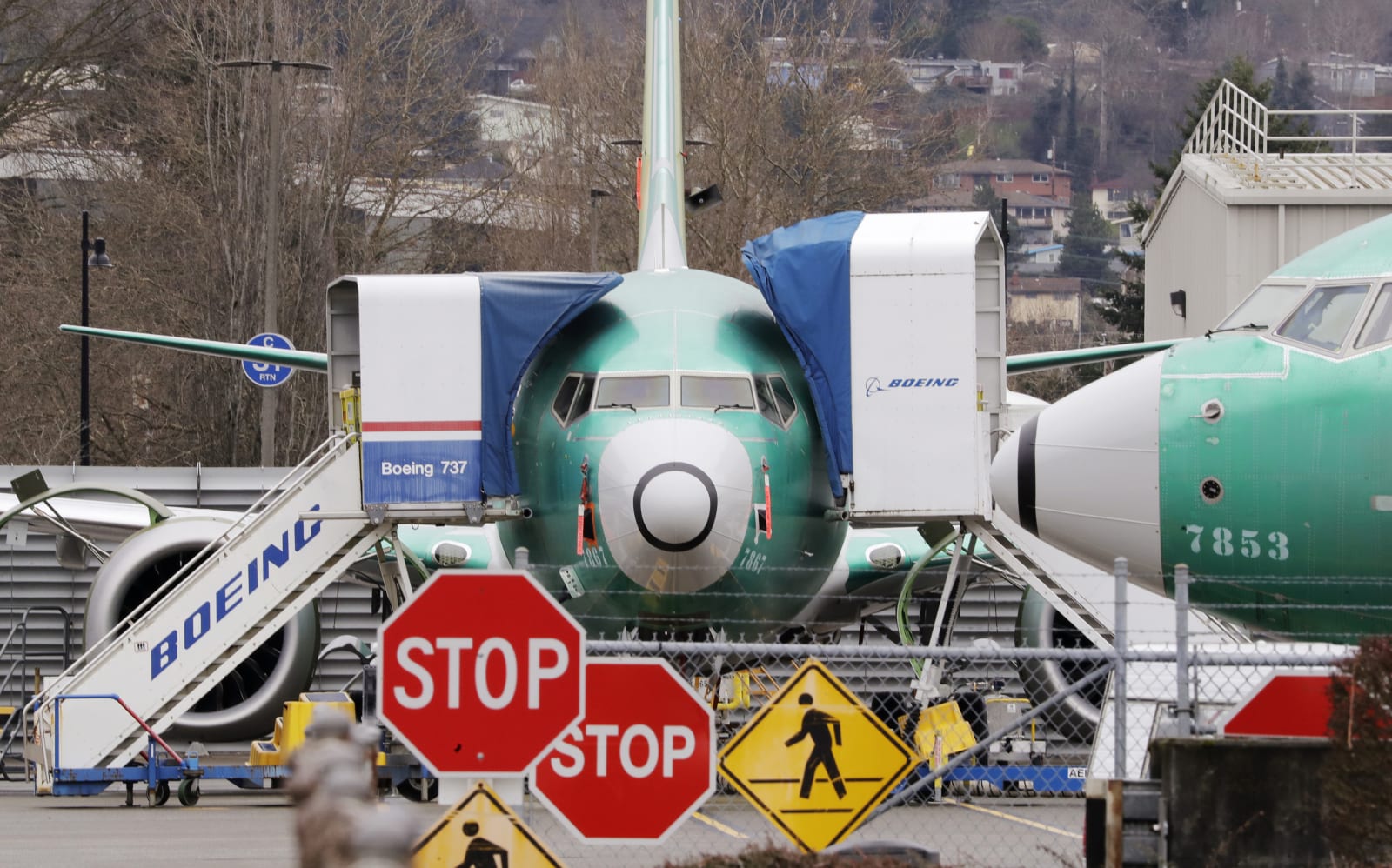 Boeing is working to fix yet another software bug on its 737 Max, Bloomberg reports. The glitch involves an indicator light for the "stabilizer trim system," which helps raise and lower the plane's nose. The light was turning on when it wasn't suppos...
Boeing is working to fix yet another software bug on its 737 Max, Bloomberg reports. The glitch involves an indicator light for the "stabilizer trim system," which helps raise and lower the plane's nose. The light was turning on when it wasn't suppos...




